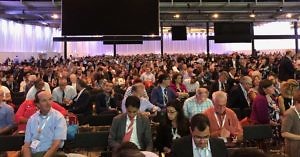TRIPLE highlights and lowlights in Developmental Therapeutics
We have two stories to share today from the EORTC-NCI-AACR Molecular Targets conference, which are posted separately owing to different embargo times.
The second posting later focuses exclusively on KRAS and Mirati’s turn in the spotlight.
Due to the embargo, it will not be available until 1545 hrs CET (1045 hrs ET) and will include some thought leader perspectives on the data. I’ll add the link here in due course.

Developmental Therapeutics is often a cases of sunny days or stormy waters ahead…
Meanwhile, in the first post (below) we take a keen look at some of the new developmental therapeutics approaches coming through company pipelines.
Which ones shine might brightly and which ones lose their lustre?
As is often the case with early stage trials, translating rational science in preclinical setting doesn’t always translate well into the clinic when humans receive a therapy or particular combination of agents.
To this end, you might be surprised at how much PK/PD issues, half life, dosing/scheduling and other many other factors can severely impact the therapeutic window.
In this post, we look carefully at several targets we have been following preclinically for a while and finally initial clinical is either available or they are heading into the clinic – what can we learn from the presentations?
To learn more from our oncology analysis and get a heads up on the latest insights and commentary pertaining to the EORTC-NCI-AACR Triple meeting, subscribers can log-in or you can click to gain access to BSB Premium Content.
This content is restricted to subscribers


 Science drives oncology new product development and the AACR special conferences are always a good place to look for insights into where the field is both emerging and also going in the future.
Science drives oncology new product development and the AACR special conferences are always a good place to look for insights into where the field is both emerging and also going in the future. While it is universally true much more attention is focused on success in clinical trials in the sense of patients who respond well to a particular therapy, this doesn’t mean we can’t learn from people who tumours either don’t respond to treatment up front or relapse early.
While it is universally true much more attention is focused on success in clinical trials in the sense of patients who respond well to a particular therapy, this doesn’t mean we can’t learn from people who tumours either don’t respond to treatment up front or relapse early.



 Resilience in purpose and openess in strategic direction are key dual features in the DNA of strong biotechs which succeed in the long run and live to survive the roller coaster ride that is oncology R&D.
Resilience in purpose and openess in strategic direction are key dual features in the DNA of strong biotechs which succeed in the long run and live to survive the roller coaster ride that is oncology R&D.
